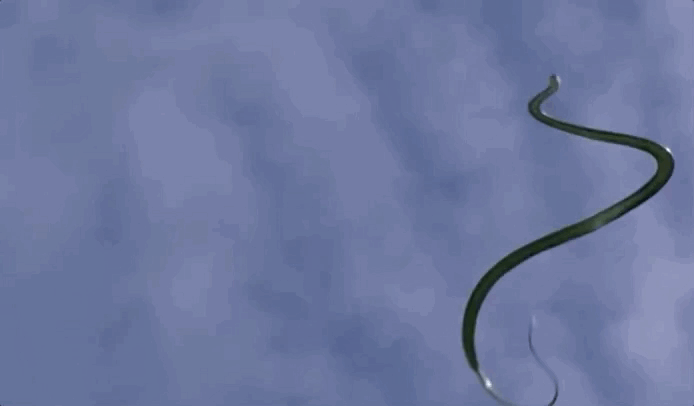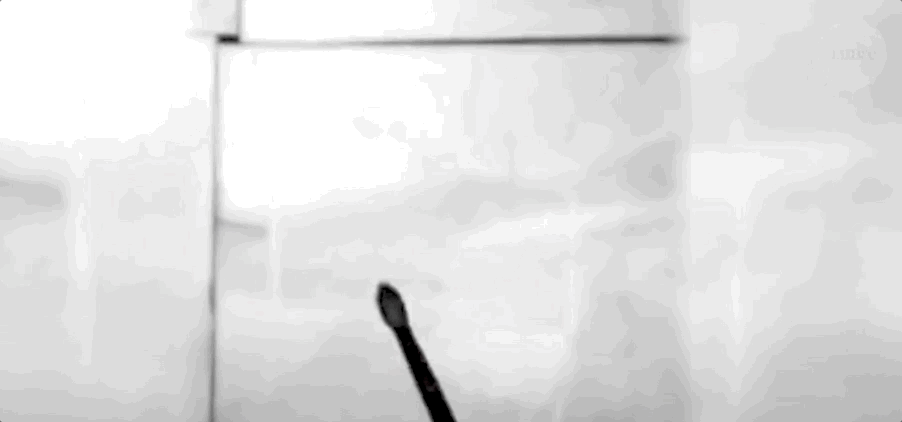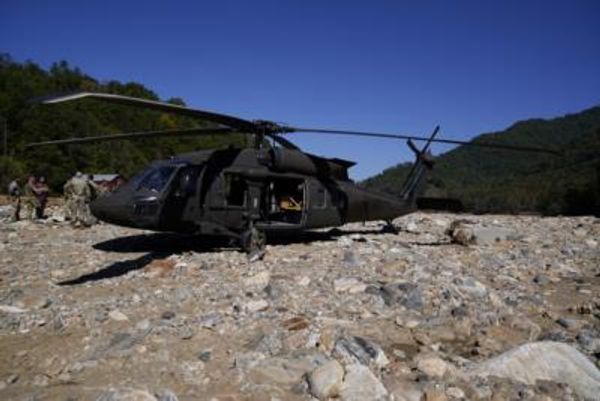
When you imagine a snake you likely think of its slither — a limbless wiggle through sand or brush. However, that stereotype limits the snake: Chrysopelea, a genus of snakes, seemingly fly as they glide from tree to tree.
Scientists recently discovered why these snakes are able to soar. They published their findings Monday in the journal Nature Physics.
Species like the paradise tree snake, found in southern Asia, are able to gracefully transition from branches to the ground because of specific movements they make in the air, the study reports. These movements stabilize the snakes as they glide.
While they're airborne, snakes undulate — wiggling as they cut through the sky. "It's this very striking motion that looks like it's swimming in the air," explains co-author Jake Socha, a professor of biomedical engineering and mechanics at Virginia Tech, in a video describing the research.
Researchers wanted to know why snakes move that way, and specifically, whether there's an underlying physical reason that the undulation helps them.
Socha and his colleagues put markers along the body of paradise tree snakes, Chrysopelea paradisi, similar to the motion-tracking markers on a human suit used for CGI in movies. That allowed them to capture the precise motion a snake's body makes while it's flying.

The researchers create a 3D model of snakes swimming through the air with the data gathered from the markers. Then, they tested movement with and without undulation, leading to the discovery that without the wavy movement, snakes are more likely to roll over in the air.
This implies that snakes moving in waves isn't an accident or a byproduct of the fact that snakes move that way on land.
"The undulation is critical to their ability to glide," Socha says. "With it, they're a graceful glider. Without it, they're just another snake falling to the ground."
The researchers also discovered a previously unknown vertical movement that helps snakes reach the ground safely. This could also be related to the snakes undulating.
What flying snakes can teach scientists — Scientists hypothesize that snakes take to the skies for several reasons: to avoid getting eaten by predators, to chase prey themselves, and to move from tree to tree. But, ultimately, the exact reason why they fly is still considered a scientific mystery.
Snakes are the only animals to use undulation to stabilize themselves in mid-air, adding a layer of uniqueness to an already bizarre flying situation.
"The snake is perhaps the least obvious animal that should be able to fly through the air," Socha says in the video.
This uncanny snake superpower has already led to better bio-inspired robot creation, including bots that can undulate on difficult terrains, like sand. In the future, this study could also inspire the design of flying robots that mimic the snake's movements, the researchers report.
Abstract: When flying snakes glide, they use aerial undulation. To determine if aerial undulation is a flight control strategy or a non-functional behavioral vestige of lateral undulation, we measured snake glides using high-speed motion capture and developed a new dynamical model of gliding. Reconstructions of the snake’s wing-body reveal that aerial undulation is composed of horizontal and vertical waves, whose phases differ by 90° and whose frequencies differ by a factor of two. Using these results, we developed a three-dimensional mathematical model of snake flight that incorporates aerodynamic and inertial effects. Although simulated glides without undulation attained some horizontal distance, they are biologically unrealistic because they failed due to roll and pitch instabilities. In contrast, the inclusion of undulation stabilized the rotational motion and markedly increased glide performance. This work demonstrates that aerial undulation in snakes serves a different function than known uses of undulation in other animals, and suggests a new template of control for dynamic flying robots.







